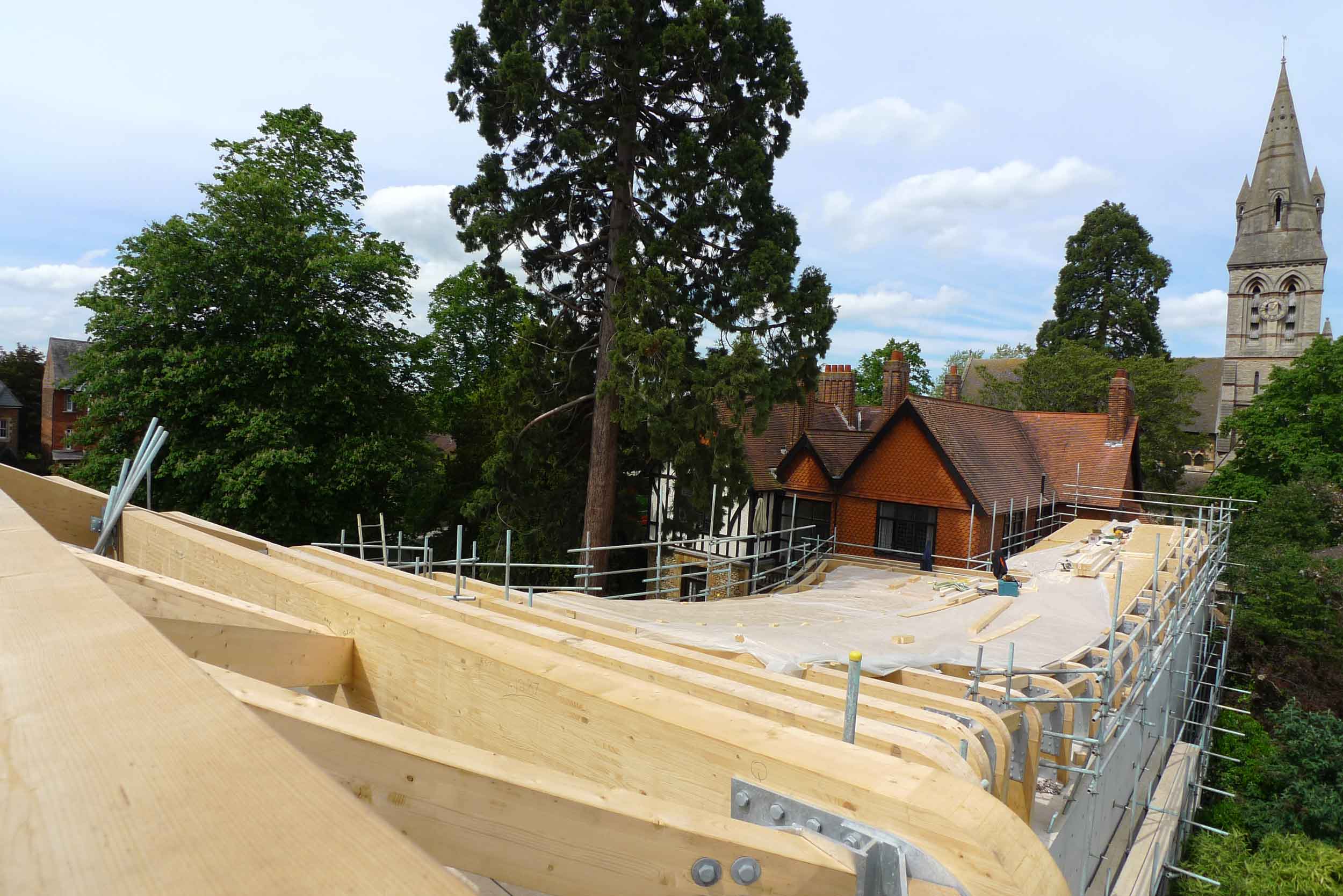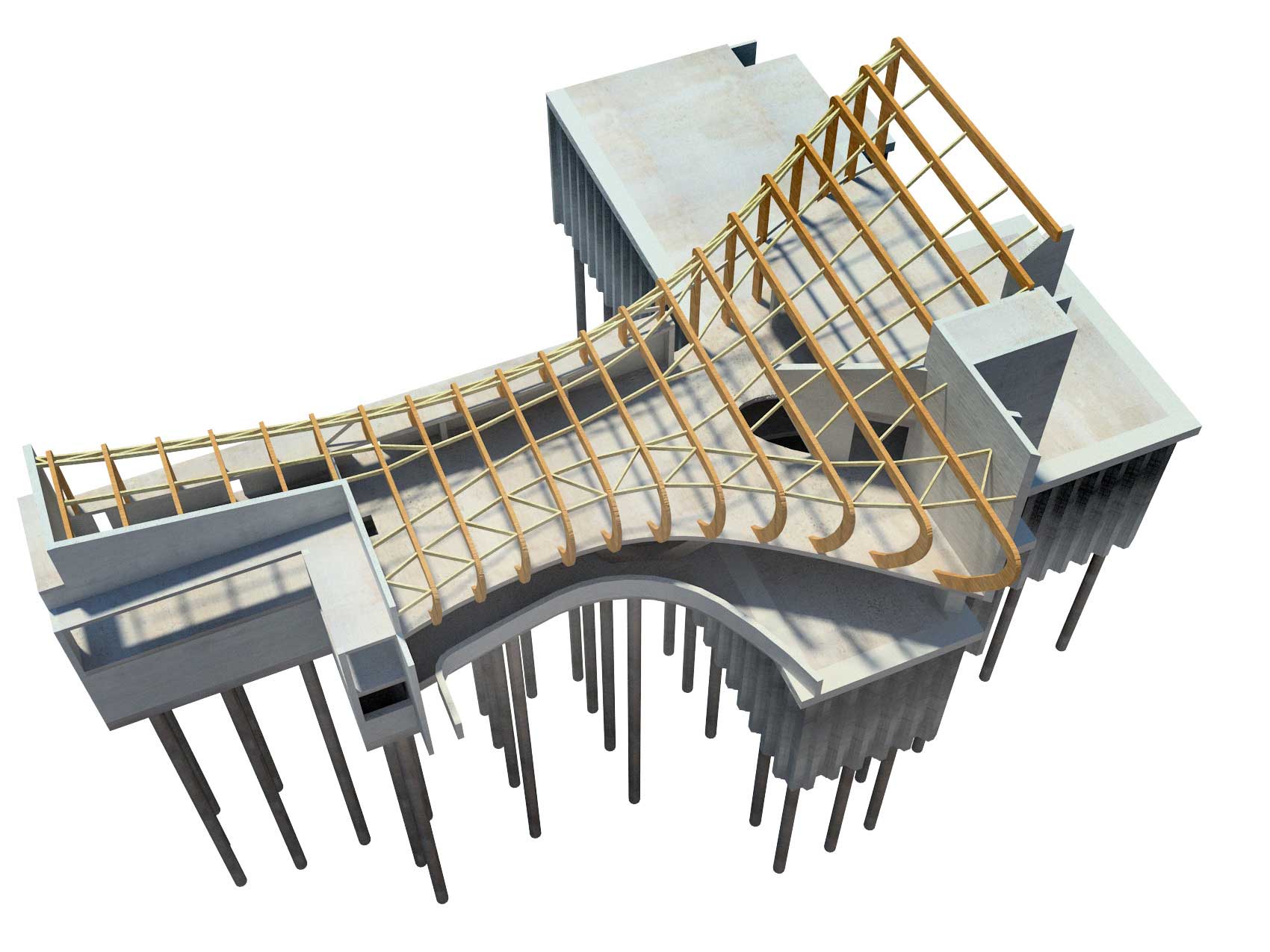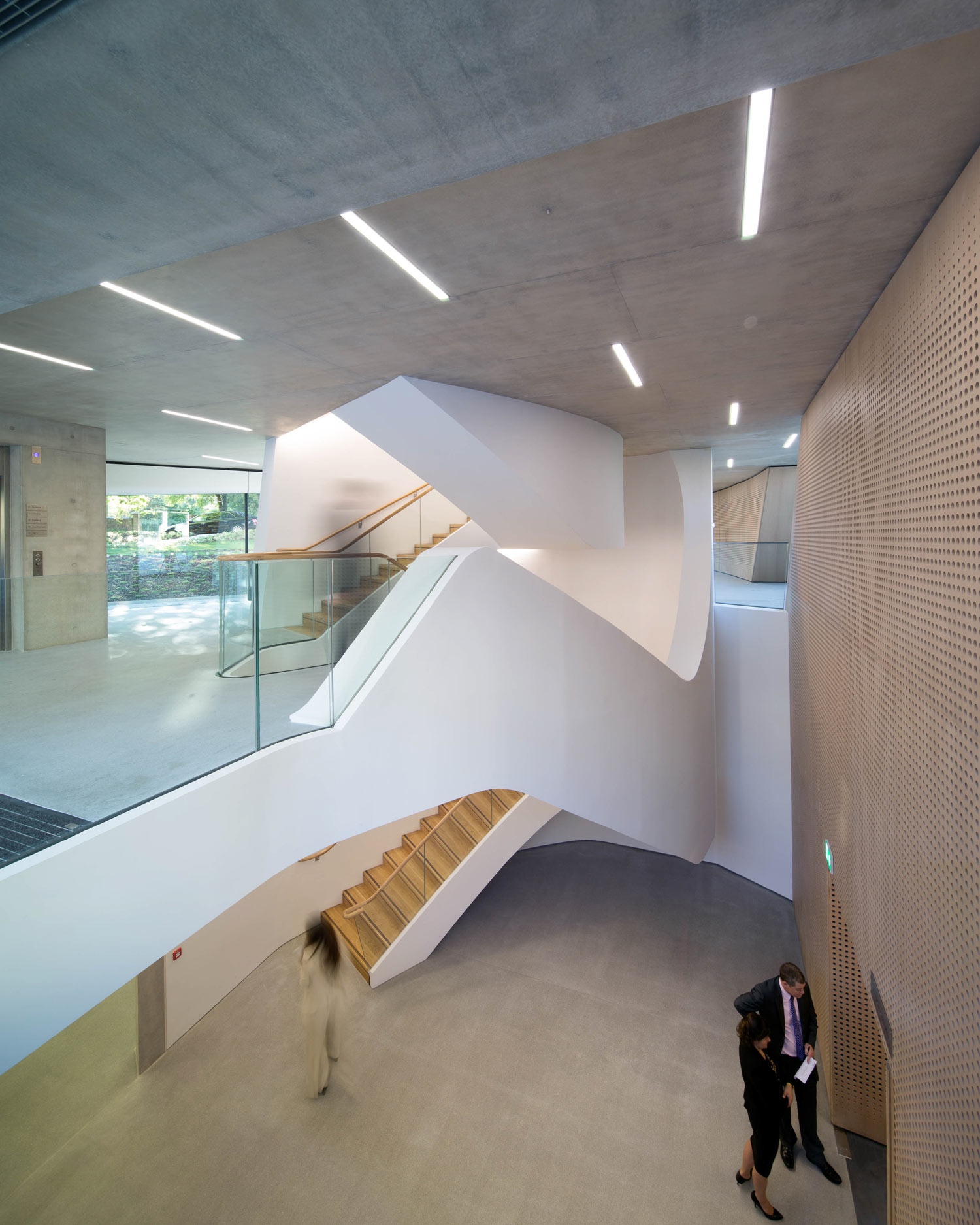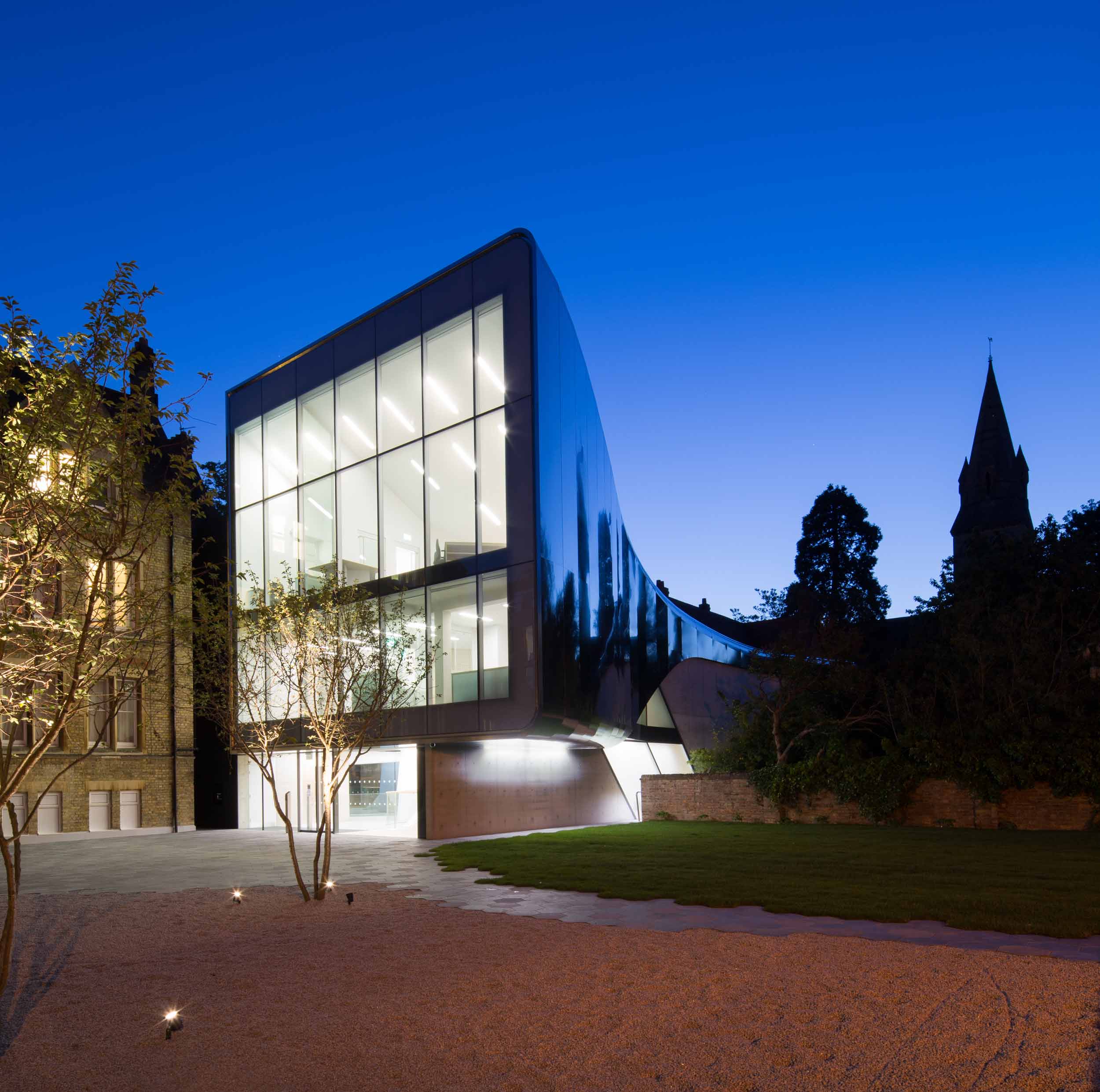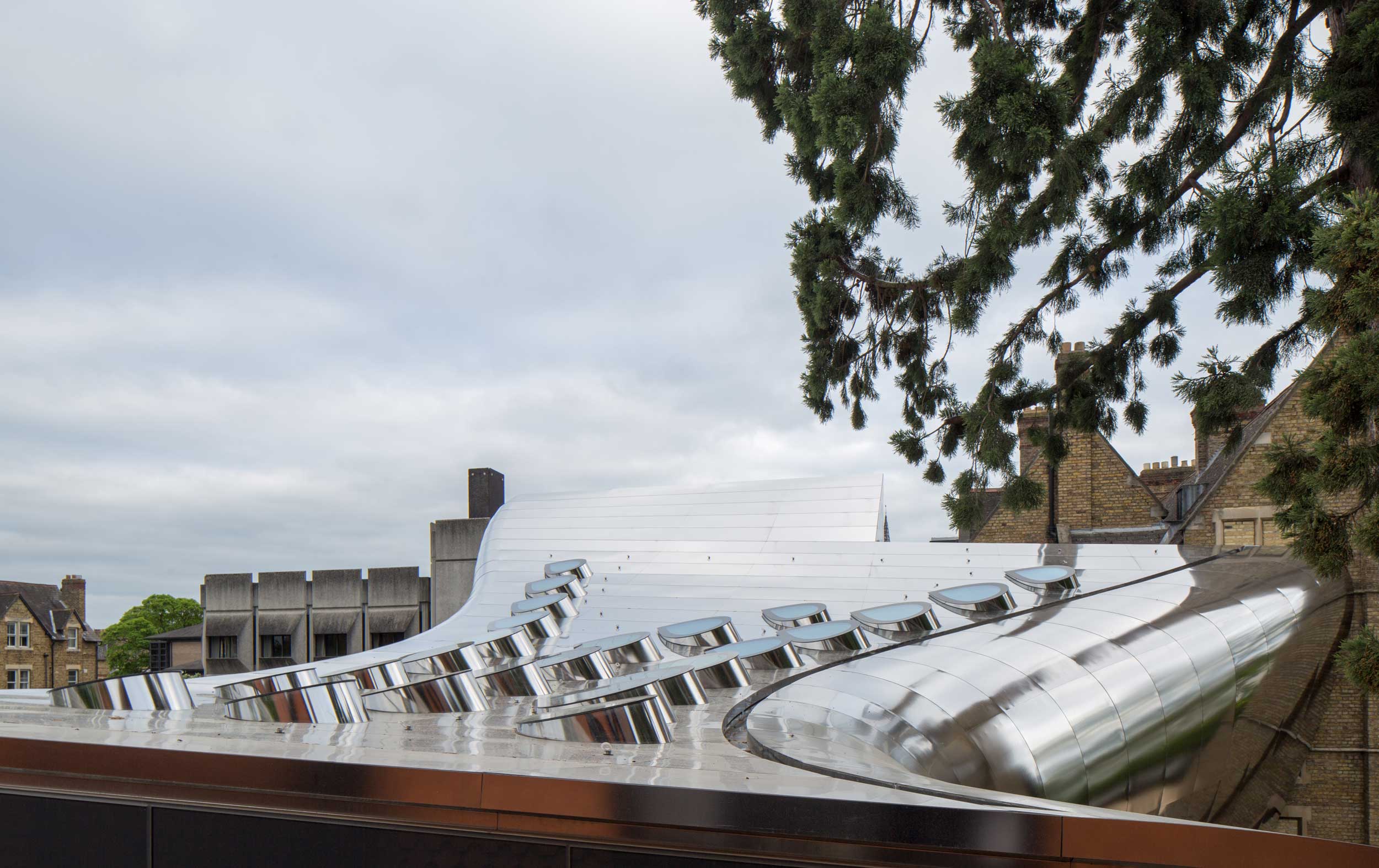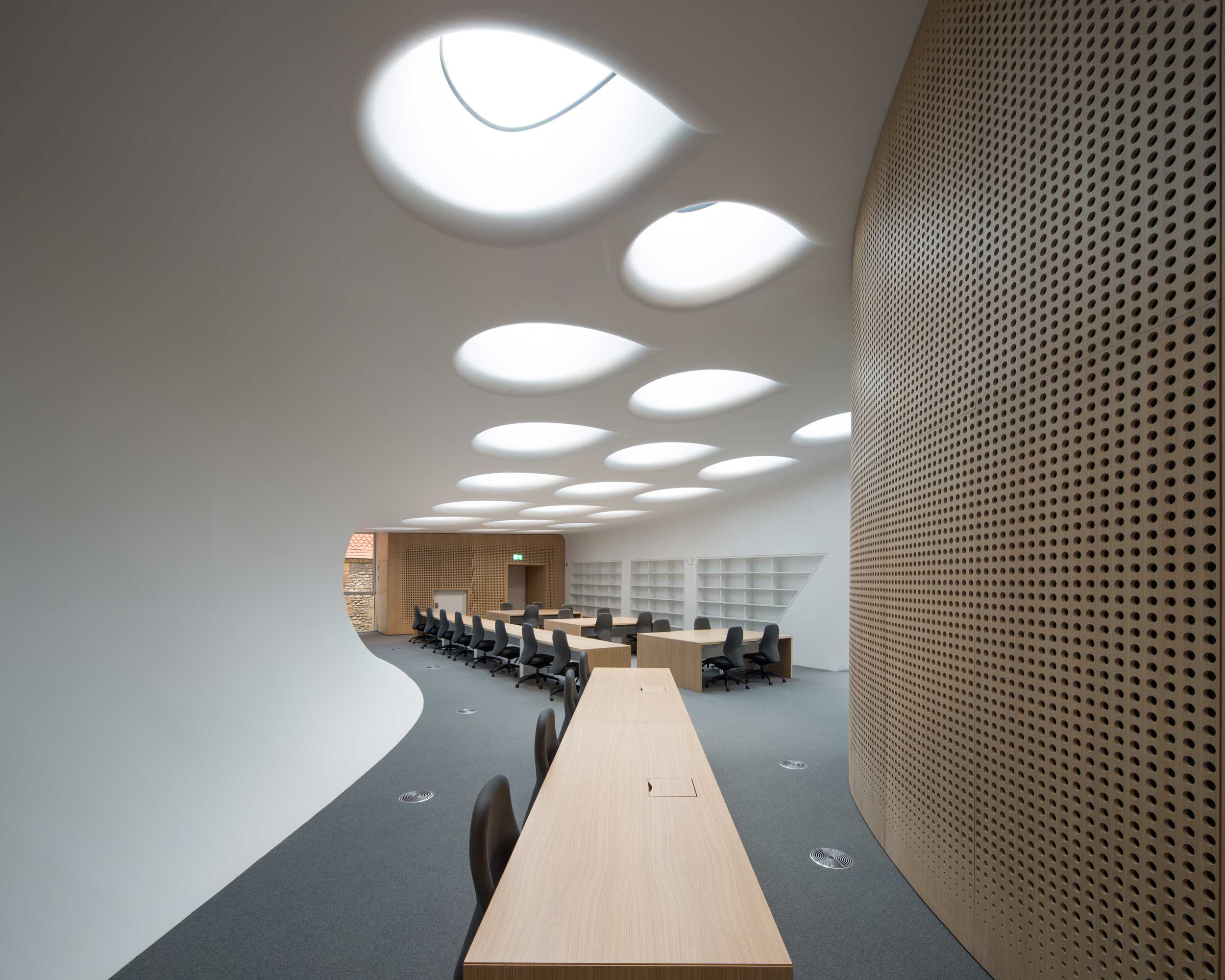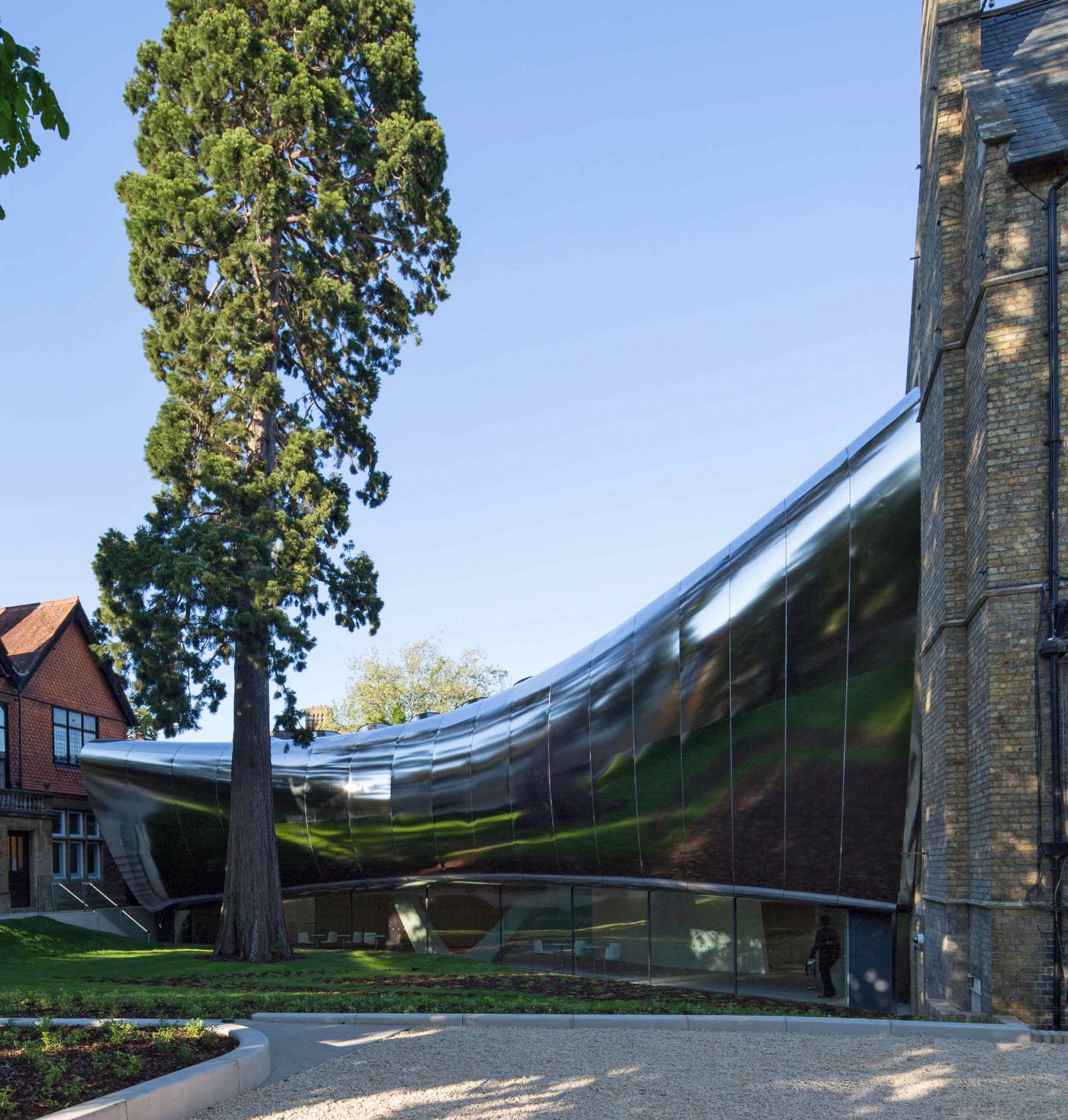
Providing modern academic space for the existing department at St Antony’s College, this link building consists of archive storage, a café, gallery, library and a lecture hall, exquisitely designed and finely tuned in response to a constrained surrounding environment.
An iconic curved structure in contrast with historic Oxford
The project posed several challenges relating to the design and coordination of a three-dimensional curved form located between two existing buildings and in close proximity to a protected sequoia tree. In order to overcome this challenge, 3D root surveys were carried out to inform the bespoke foundation solution, with 3D modelling tools used to accurately position and coordinate the structural elements within the three-dimensional curved envelope.
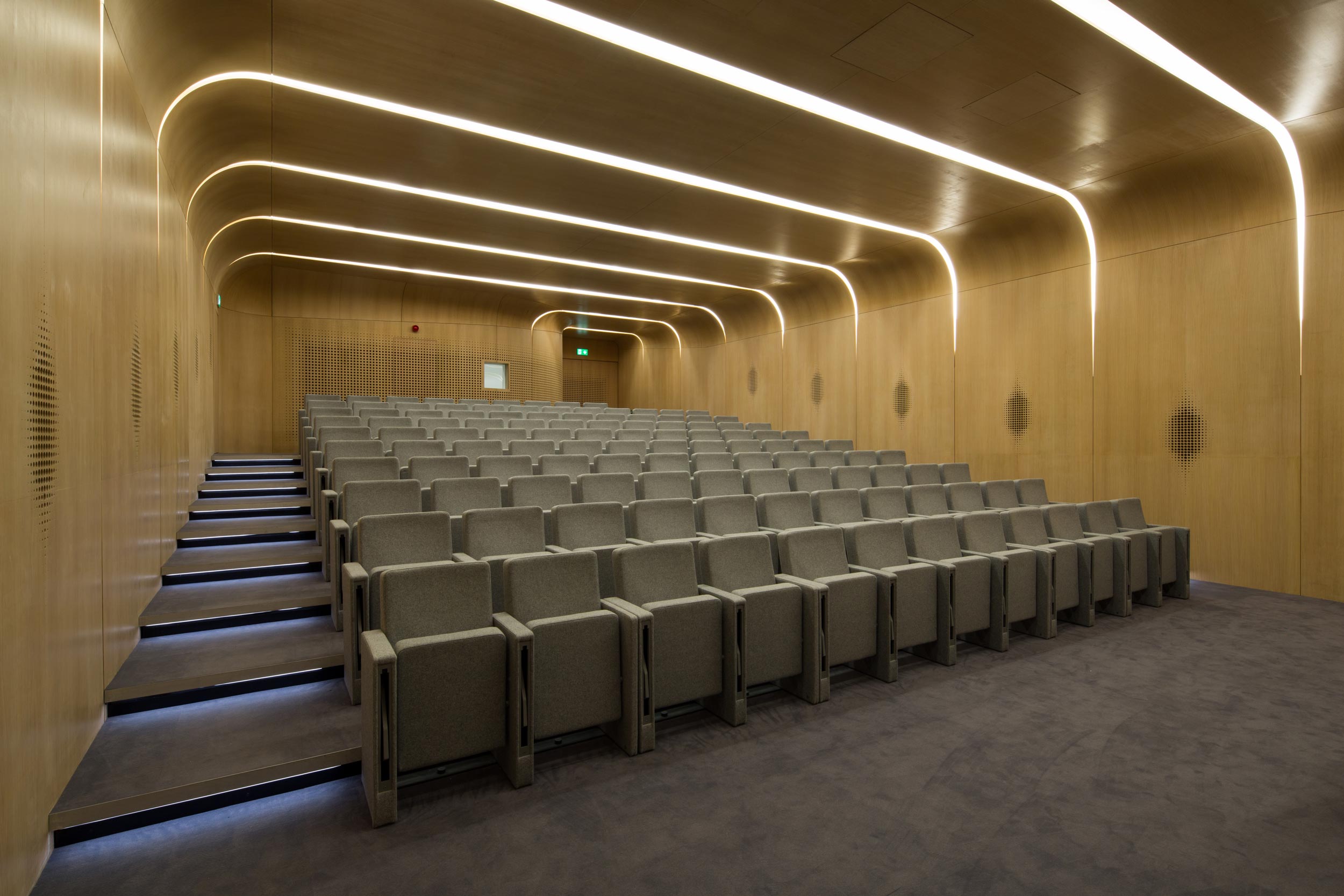
The building structure is made from in-situ reinforced concrete, with the exception of the roof, which has glued laminated timber as its main material. The architectural aspiration for an exposed concrete building required special attention in the design and detailing of the reinforced concrete structure. The visual appearance of the long exposed concrete walls did not allow the introduction of any expansion joints, requiring extensive finite element analysis to assess thermal effects on the reinforced concrete frame. Several lighting features were also incorporated into the detailing of the concrete structure, such as the linear lighting slots in the exposed soffit of the first floor slab. However the key to the successful delivery of the fair-face concrete was an understanding of the architectural aspirations from an early stage of the project and the collaborative development of the details.
The exposed concrete structure is also part of the environmental strategy of the building, to which contribute not only the fair-faced soffits and surfaces of concrete slabs and walls above ground, but also the exposed concrete forming the thermal labyrinths that ventilate the lecture theatre and archive room within the basement.
This iconic project provides a very good example of how a modern form of construction and architecture can be executed within a space framed by traditional architecture. The ambition is for the space to inspire people to study within the building and socialise in the surrounding area.
2016 WAF Award – Best Higher Education & Research
2016 RIBA National Award
2016 RIBA Regional Award
